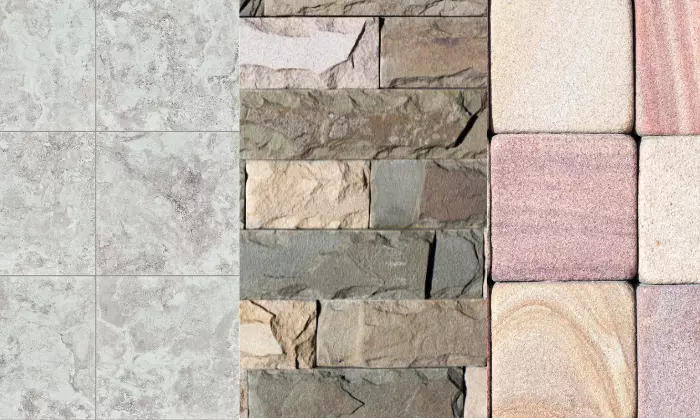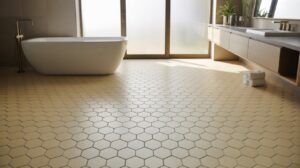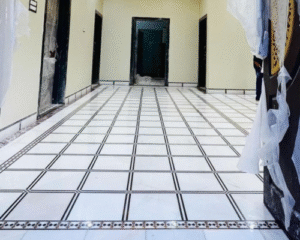Quality White Travertine Tile for Floors & Walls
White travertine tile is a timeless and elegant choice for both floors and walls, offering a unique blend of natural beauty and functionality. This article explores the characteristics, benefits, and applications of white travertine tile, providing you with a comprehensive guide to this versatile material.

Table of Contents
ToggleCharacteristics Of White Travertine Tile
White travertine tile is prized for its natural beauty and distinct characteristics. Here are some of the key features:
Color Variations And Patterns
White travertine tile offers a range of color variations, from bright white to soft beige, creating a versatile and timeless look. The tiles often feature delicate veins and patterns that run through them, adding character and depth. These subtle variations ensure that each tile is unique, making it ideal for a variety of design styles. The natural imperfections and organic patterns give the stone a sophisticated, earthy appearance, which enhances the aesthetic of floors, walls, and countertops. The result is a luxurious, yet understated, finish that can complement both modern and traditional interiors.
Textural Qualities
White travertine tile is prized for its versatile texture. It can be polished to a smooth, refined finish, showcasing its elegant, sophisticated appeal. Alternatively, it can be left with a rough, tumbled surface, offering a rustic, weathered look that adds character and charm. This flexibility in texture makes white travertine an excellent choice for various design styles, from modern and sleek to traditional or Mediterranean. Whether you prefer a polished or rustic appearance, the natural texture of white travertine enhances the visual interest and depth of any space.
Durability And Strength
White travertine tile is celebrated for its durability and strength, able to endure heavy foot traffic, making it a great choice for both residential and commercial spaces. Its resilience ensures it can handle everyday wear and tear. However, compared to harder stones like granite or quartzite, travertine is softer, which means it can be more prone to scratching and chipping. While it remains a reliable flooring option, care should be taken to avoid damaging its surface, particularly in high-use areas. Regular maintenance, such as sealing, can help preserve its appearance and extend its lifespan.
Natural Vs. Engineered Options
White travertine comes in two types: natural and engineered. Natural white travertine is extracted directly from quarries, showcasing unique, natural variations in color and texture. Engineered white travertine, on the other hand, is crafted from natural stone fragments mixed with resins, creating a more uniform appearance. While both options deliver the aesthetic appeal of natural stone, engineered travertine often offers more consistency in color and pattern, making it easier to match across large areas. Both choices provide durability and elegance, with engineered travertine potentially being a more reliable option for those seeking uniformity.
Benefits Of Using White Travertine Tile
White travertine tile offers a multitude of benefits that make it a popular choice for homeowners and designers alike.
Aesthetic Appeal
White travertine tile offers a sophisticated and timeless aesthetic that elevates the visual appeal of any room. Its soft, neutral tones blend seamlessly with different design styles, making it a versatile choice for both traditional and modern interiors. The subtle variations in texture and color add depth and character to spaces, whether used for floors, walls, or countertops. Its ability to complement various materials and color schemes ensures that white travertine remains a popular choice for creating elegant, lasting designs that exude natural beauty and refinement. Its understated elegance enhances any environment, making it a truly adaptable material.
Versatility In Design Styles
White travertine tile is highly versatile, making it suitable for various design styles. Its neutral, timeless aesthetic seamlessly complements both contemporary and traditional settings. In modern kitchens, it pairs beautifully with sleek, white cabinetry, creating a clean, elegant look. In rustic bathrooms, the natural veining and texture of white travertine enhance the space’s earthy charm. Whether in minimalist or more elaborate spaces, white travertine adds a touch of sophistication, elevating the overall design while maintaining a sense of warmth and style. Its adaptability ensures it remains a popular choice for diverse home interiors.
Light-Reflective Properties
White travertine tile has exceptional light-reflective properties, which help brighten up any room by bouncing light around the space. This reflective quality enhances the overall ambiance, making rooms feel larger, fresher, and more open. It’s especially beneficial in spaces where natural light is limited, as it maximizes the available light and creates a welcoming atmosphere. Whether used for floors, walls, or backsplashes, white travertine can help elevate the look of a room, providing a sense of tranquility and lightness. Its ability to reflect light makes it a great choice for enhancing the visual appeal of any interior.
Eco-Friendly Option
Travertine is a natural stone that makes an eco-friendly option for flooring and wall coverings. Unlike synthetic materials, it is sourced from the earth, requiring minimal processing and having a smaller environmental footprint. The extraction and manufacturing processes of travertine consume less energy and produce fewer pollutants compared to artificial alternatives. Additionally, since it is durable and long-lasting, travertine reduces the need for frequent replacements, further minimizing its environmental impact. Choosing travertine helps preserve natural resources while contributing to a sustainable, earth-conscious building practice. Its natural beauty and minimal processing make it a green choice for homeowners.
Low Maintenance Requirements
White travertine tile is low-maintenance, requiring minimal effort to keep it in good condition. Regular cleaning with a damp mop and a mild detergent is sufficient to remove dirt and keep the surface looking fresh. To further protect the tile from stains, spills, and moisture, sealing the travertine is recommended. Sealing prevents liquids from penetrating the porous surface, maintaining the tile’s appearance and durability. With the right care, white travertine tile remains an attractive, long-lasting flooring option with minimal upkeep.
Common Applications
White travertine tile is incredibly versatile and can be used in various applications throughout the home.
Flooring
White travertine floor tile enhances any space with its elegant appearance and long-lasting durability. Its naturally textured surface and subtle color variations provide a sophisticated, timeless look that suits a variety of interior styles. Due to its robust composition, travertine is ideal for high-traffic areas such as living rooms, kitchens, and hallways, where both beauty and practicality are essential. This stone’s resilience to wear and ability to maintain its charm over time makes it a popular choice for homeowners seeking a luxurious yet functional flooring option. It also complements a wide range of décor styles and color schemes.
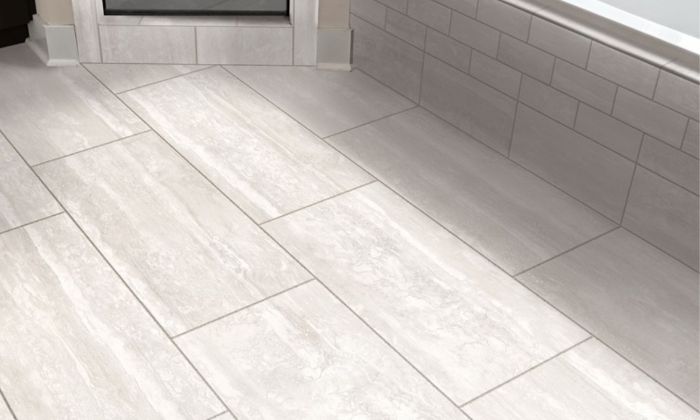
Wall Coverings
White travertine tile is an excellent choice for wall coverings, adding elegance and a natural aesthetic to any space. Its unique texture and earthy tones create a sophisticated focal point, enhancing the overall design of a room. Whether used on a feature wall in the living room or as an accent wall in the bedroom, white travertine brings both style and visual interest. The stone’s natural veining and subtle color variations provide depth and character, making it a timeless and versatile option for elevating your home’s interior design. Its durability ensures long-lasting beauty.
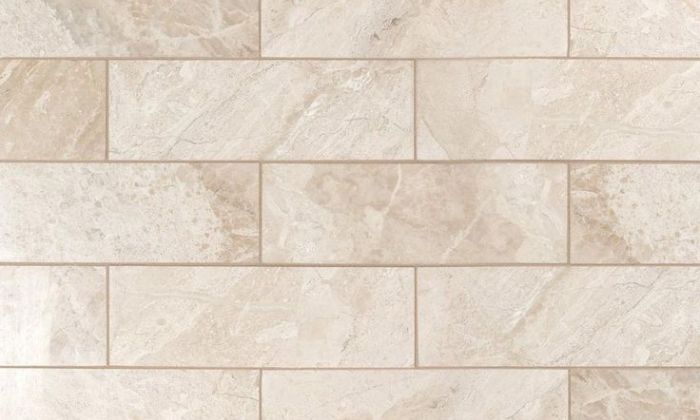
Outdoor Patios And Pool Areas
White travertine tile is a popular choice for outdoor patios and pool areas due to its blend of practicality and style. The tile’s cool surface helps keep the area comfortable even on hot days, making it perfect for sunny outdoor spaces. Additionally, its natural slip resistance ensures safety, particularly around pool areas where wet surfaces can be hazardous. With its elegant appearance and durability, white travertine enhances the aesthetic of outdoor spaces while providing a safe, low-maintenance option for high-traffic areas. Its versatility makes it a top choice for creating a sophisticated outdoor retreat.

Bathroom Tiles And Vanities
Bathroom tiles and vanities play a crucial role in creating a stylish and practical space. White travertine tiles are often chosen for their elegance and versatility, ideal for use in showers, floors, and vanity tops. This natural stone offers a timeless, luxurious appearance that complements a variety of bathroom designs. Its neutral tones work well with different color schemes, while its durability and resistance to moisture make it a functional choice for high-humidity areas. When paired with white tiles, travertine creates a seamless, sophisticated look, transforming the bathroom into a serene and inviting retreat.
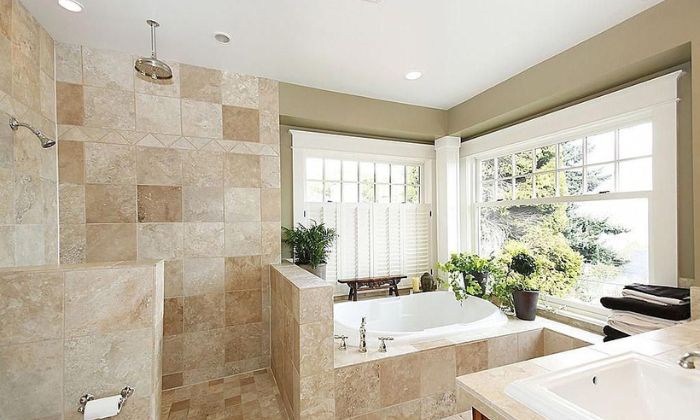
Kitchen Backsplashes
A white travertine tile backsplash can instantly enhance the aesthetic of any kitchen. Its subtle, earthy tones complement white cabinets, creating a clean, sophisticated look. The natural texture of travertine adds warmth and character to the space, making it feel inviting and timeless. This backsplash choice is versatile, fitting a variety of kitchen styles, from traditional to modern. The neutral color ensures it pairs well with other design elements, while its durability and ease of maintenance make it a practical and stylish addition. Overall, white travertine brings both beauty and functionality to your kitchen design.
Installation Process
Proper installation is key to ensuring the longevity and beauty of white travertine tile.
Preparation And Planning
Preparation and planning are key steps before tile installation. Start by ensuring the surface is clean, level, and dry to provide a solid foundation. This helps the tiles adhere properly and prevents future issues. Next, plan the tile layout carefully to ensure the design is symmetrical and balanced. This includes marking reference lines for accurate placement and minimizing awkward cuts. Planning ahead not only enhances the aesthetic but also reduces the risk of mistakes, saving time and materials during installation. Proper preparation ensures a smoother process and a high-quality, long-lasting finish.
Choosing The Right Adhesive And Grout
Choosing the right adhesive and grout is crucial for a successful tile installation, especially when working with natural stone like white travertine. A high-quality adhesive designed for natural stone ensures a strong bond, preventing tiles from shifting or detaching over time. It’s important to select a grout that not only matches the aesthetics of the white travertine but also provides durability. Opt for a grout color that enhances the tile’s appearance while maintaining the overall look of the space. This ensures both the functionality and beauty of the installation, contributing to a long-lasting and visually appealing result.
Cutting And Laying The Tiles
Cutting and laying travertine tiles requires attention to detail and the right tools. To cut the tiles accurately, a wet saw is essential, as it helps achieve clean, smooth cuts while minimizing dust. Start by measuring and marking the tiles before cutting them to fit the space. When laying the tiles, arrange them in your desired pattern, whether it’s a straight lay, herringbone, or another design. Ensure consistent spacing between tiles using tile spacers, and double-check alignment to maintain a professional finish. Proper cutting and precise installation are key for a polished, long-lasting result.
Sealing And Finishing Touches
Sealing and finishing touches are essential for protecting and enhancing the appearance of travertine tiles. Once the tiles are laid and the grout has dried, apply a high-quality sealer to safeguard the surface from stains, moisture, and other damage. The sealer forms a protective barrier that helps maintain the stone’s integrity over time. After sealing, the final step is to polish the travertine surface. Polishing brings out the natural beauty of the stone, giving it a smooth, glossy finish that enhances its color and texture, completing the installation with a refined, long-lasting look.
Maintenance Tips
Maintaining white travertine tile is relatively simple with the right care and attention.
Regular Cleaning Methods
To maintain white travertine tiles, regular cleaning is essential. Use a soft mop and a mild, pH-neutral detergent to avoid damaging the stone. Harsh chemicals, acidic cleaners, or abrasive materials can harm the surface by causing discoloration or etching. For routine cleaning, simply dampen the mop with water and detergent, then gently wipe the tiles. Always ensure that excess moisture is wiped off, as prolonged water exposure can cause damage. Regular care will help preserve the natural beauty of your white travertine tiles and prevent buildup of dirt and grime.
Dealing With Stains And Scratches
To manage stains and scratches on travertine, act quickly to avoid permanent damage. For stains, use a poultice or a cleaner formulated for travertine to lift the stain without harming the surface. For scratches, light sanding can smooth the affected area, followed by re-polishing to restore the stone’s original finish. Always choose products made specifically for travertine to prevent further damage, and avoid harsh chemicals that could worsen the condition. Regular maintenance and prompt attention to issues can help preserve the beauty of your travertine surfaces for years.
Resealing Frequency And Techniques
Resealing white travertine tile is crucial for preserving its appearance and protecting it from stains, dirt, and moisture. Typically, resealing should be done every 1-2 years, but this can vary based on the tile’s usage and exposure to wear and tear. Regular resealing helps maintain the stone’s natural beauty and prevents damage. Always follow the manufacturer’s instructions for the specific product you are using, as different sealers may have unique application methods and drying times. Proper resealing ensures that the protective layer remains intact, extending the lifespan of your travertine tiles.
Conclusion
Incorporating white travertine tile into your home brings a touch of natural elegance and timeless beauty. Its versatility, aesthetic appeal, and durability make it a popular choice for both floors and walls. Whether you’re designing a modern kitchen with white cabinets or a rustic bathroom with natural stone accents, white travertine tile is sure to enhance your space. By understanding its characteristics, benefits, and proper installation and maintenance practices, you can enjoy the enduring beauty of white travertine tile for years to come.

